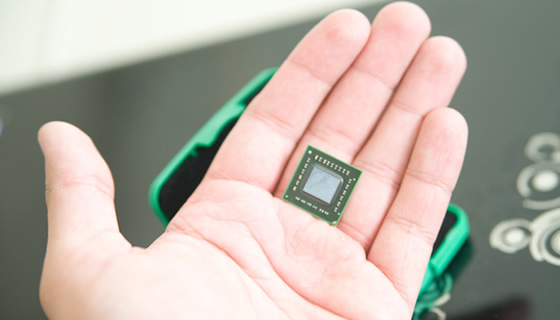Last week, AMD offered a peek at the first Accelerated Processing Units (APUs) designed for sub-$500 ultraportable, netbook and nettop systems. The chips in question are part of the upcoming Brazos platform which itself comprises two APU categories: "Ontario" is the codename for the low-voltage (9W or less) parts that will rival Intel's Atom, while "Zacate" uses up 18W of power and should target Intel's range of CULV processors.
Besides talking up the architecture and platform, AMD revealed the actual SKUs that will launch in early 2011, alongside their respective specs, but today the embargo on benchmark numbers has finally been lifted and the first reports are starting to trickle out. The specific processor that testers got their hands on was the AMD E-350 with AMD Radeon HD 6310 Graphics (dual-core CPU @ 1.6GHz, DX11 GPU @ 500MHz). This is the quickest Zacate part and was tested using Windows 7 x64, a 128GB Crucial RealSSD C300, and 4GB of DDR3 SDRAM.

Note that this configuration isn't typical of notebooks in the sub-$500 price range but it'll have to do for now. Overall, the verdict seems to be you'll get performance pretty much on par with Intel's entry-level CULV and CULV 2010 processors, though with better graphics performance. It's faster than Atom – but of course these two won't compete in the same segment - and also manages to outperform a pair of K8s running at 1.5GHz in the Athlon X2 3250e in some tests. On the other side of the spectrum, however, Intel's Pentium dual-core running at 2.2GHz was consistently much quicker than an E-350 in tests run by Anandtech, who notes that most notebooks in the $400+ range have at least a 2.2GHz Pentium.
In terms of power consumption the Zacate-based system maxed out at 25.2W while running an x264 encode test. That's for the entire system, and with the exception of the Atom D510, the rest of the platforms tested used much more than that at idle. So while AMD isn't going to impress with raw performance it will have the advantage in power draw and GPU performance. You can check out more details and a full range of tests over at Anandtech, Tech Report, and PC Per.